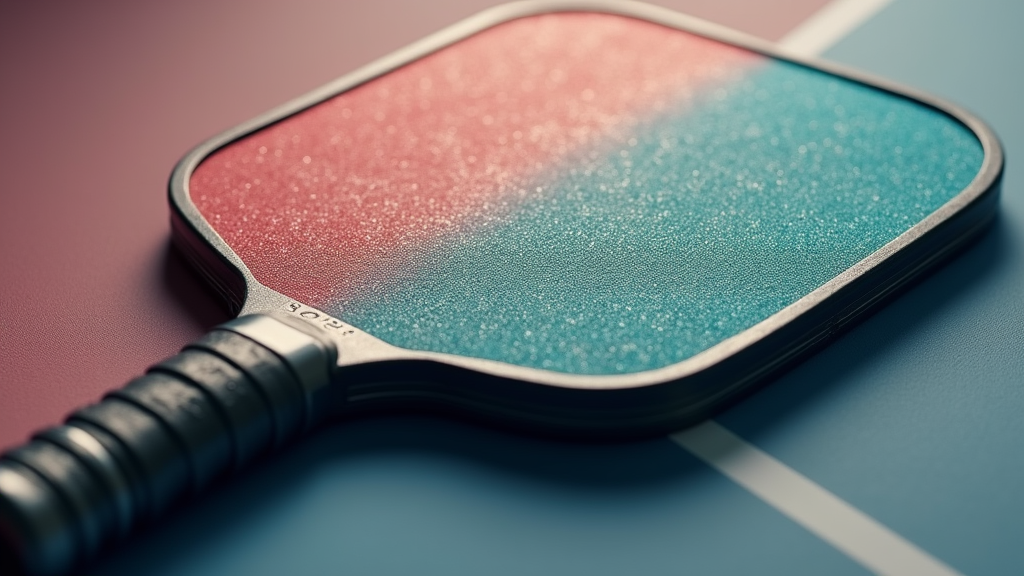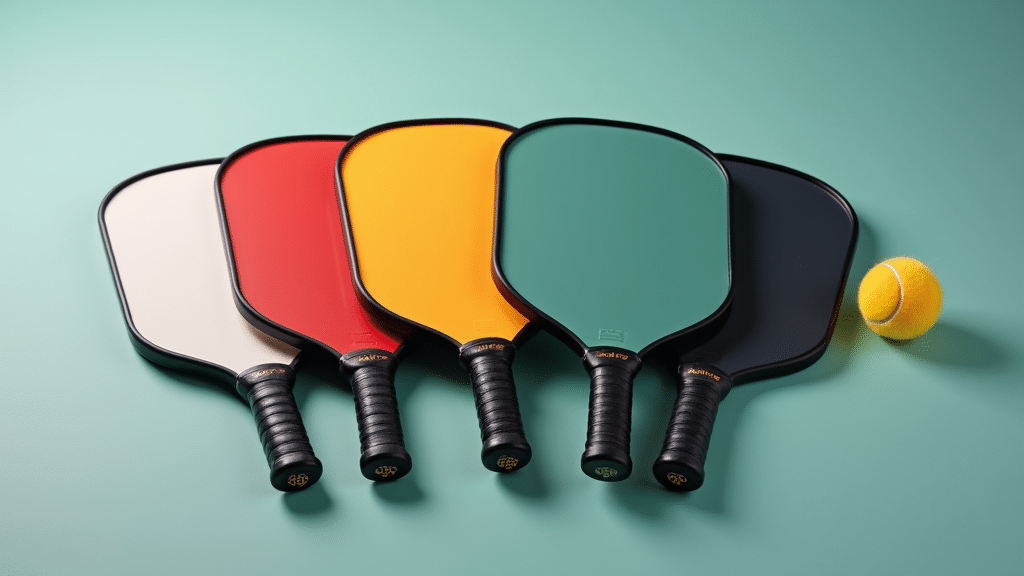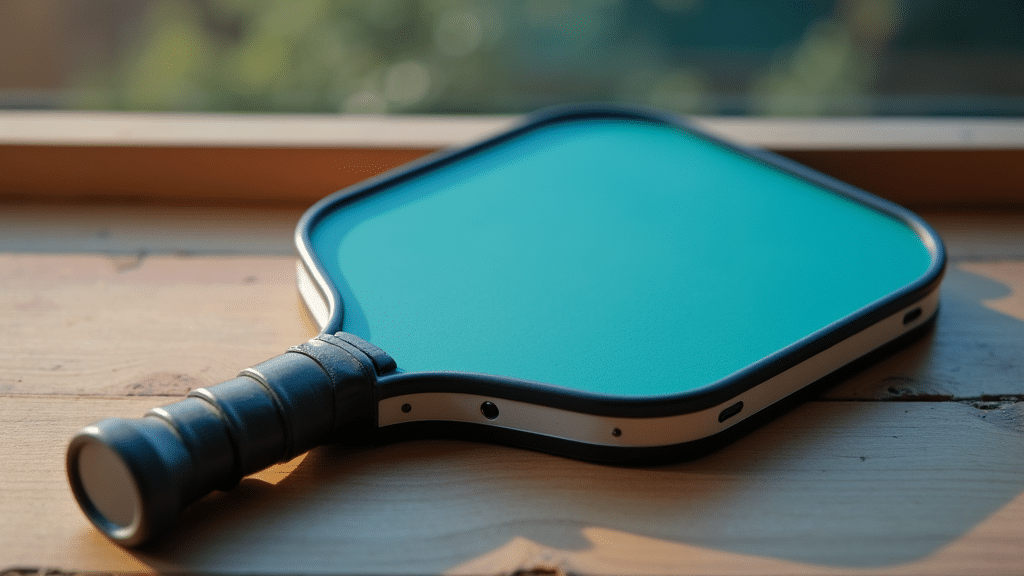Table of Contents
- Understanding Pickleball Paddle Face Textures Outline
- Pickleball Paddle Face Textures Outline: Understanding the Basics
- Understanding Pickleball Paddle Face Textures and Materials
- Composite Pickleball Paddle Face Textures: Durability & Spin
- Graphite Pickleball Paddle Face Textures: Lightweight Control
- Carbon Fiber Pickleball Paddle Face Textures: Strength & Power
- Kevlar Pickleball Paddle Face Textures: Innovative Feel
- Hybrid Pickleball Paddle Face Textures: Customized Performance
- Aluminum Pickleball Paddle Face Textures: Affordable Option
- Pickleball Paddle Face Texture Materials: Pros and Cons
- Composite Pickleball Paddle Texture: Advantages & Disadvantages
- Graphite Pickleball Paddle Texture: Advantages & Disadvantages
- Carbon Fiber Pickleball Paddle Texture: Advantages & Disadvantages
- Hybrid Pickleball Paddle Texture: Advantages & Disadvantages
- Aluminum Pickleball Paddle Texture: Advantages & Disadvantages
- Exploring Pickleball Paddle Face Textures Outline: Adding Texture
- Increasing Spin: The Purpose of Adding Texture
- Methods to Add Texture: Pickleball Paddle Enhancement
- Sanding Pickleball Paddles for Enhanced Texture
- Spray Coating for Pickleball Paddle Grip
- Grip Tape Application for Added Paddle Texture
- Grip Gel Application for Enhanced Paddle Feel
- Epoxy Resin Coating for Paddle Texture
- Pickleball Paddle Face Textures Outline: Advantages & Disadvantages
- Pickleball Paddle Face Textures Outline: Legal Regulations
- Choosing the Right Pickleball Paddle Face Textures Outline
- Pickleball Paddle Face Textures Outline: Key Takeaways
- Recap: Impact of Pickleball Paddle Face Texture
- Material and Texture Advantages: A Pickleball Paddle Review
- Rules and Regulations: Pickleball Paddle Texture Compliance
- Paddle Selection: Matching Texture to Pickleball Playing Style
- Environmental Impact: Considering Paddle Material Choices
- Maintaining Pickleball Paddle Texture for Peak Performance
Understanding Pickleball Paddle Face Textures Outline
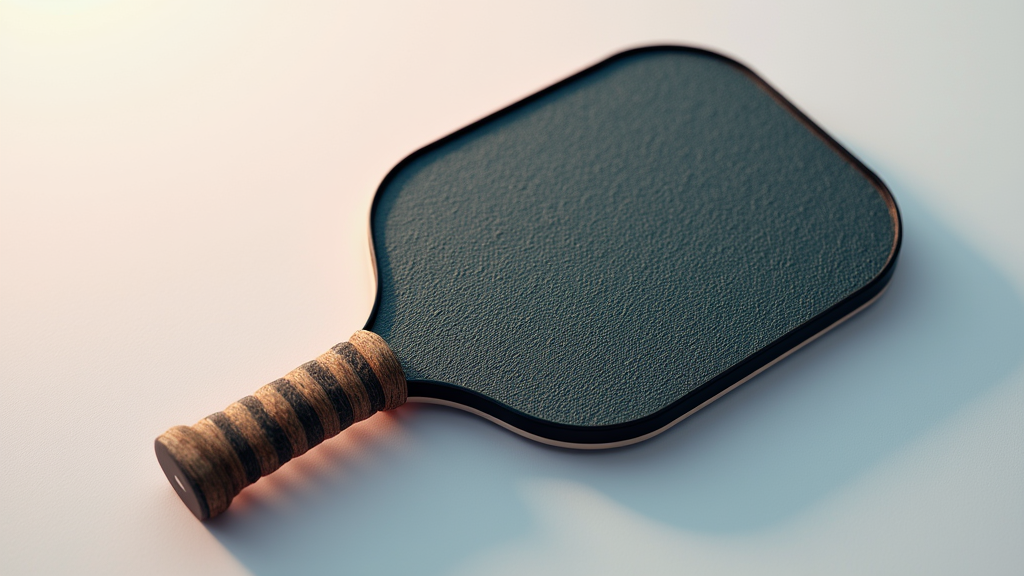
Why Pickleball Paddle Face Textures Matter for Performance
Understanding pickleball paddle face textures is crucial for optimizing your performance on the court. The texture of your paddle significantly affects spin, control, and overall feel. In fact, studies show that paddle texture can increase spin by up to 30%. Choosing the right texture for your playing style can significantly improve your game, giving you an edge over your opponents.
Evolution of Pickleball Paddle Surface Textures
Early pickleball paddles had minimal texture, offering a very different playing experience compared to today’s equipment. Recent advancements in materials and manufacturing techniques have allowed for highly customized textures, tailored to specific playing styles and preferences. The growth of the pickleball market has fueled this innovation, leading to a wide array of specialized textures now available.
Exploring Paddle Materials and Texture Selection
In this guide, you’ll learn the core concepts related to pickleball paddle face materials and textures. We’ll explore the different types of textures available and their impact on gameplay. You’ll also gain practical knowledge on how to choose the right texture to match your playing style. Finally, we’ll briefly touch on modifying your paddle face texture and the rules surrounding such modifications.
Pickleball Paddle Face Textures Outline: Understanding the Basics
Fundamental Concepts of Paddle Face Textures
Understanding pickleball paddle face textures begins with grasping a few key definitions. Texture refers to the surface characteristics of the paddle face, which directly influences spin, control, and dwell time – the amount of time the ball stays on the paddle face during contact. The core principle is that a rougher texture generally imparts more spin, affecting the ball’s trajectory and bounce.
Essential Components of Pickleball Paddle Textures
The essential components of a pickleball paddle face texture include the paddle face material itself and the method used to apply the texture. Several key features should be considered when evaluating a paddle’s texture. Primary aspects include grip (how well the texture allows you to hold the ball), spin potential, and control. Secondary aspects involve durability, vibration dampening, and even aesthetic appeal. Important variations to note are the roughness level, the pattern type of the texture, and the material composition used to create the texture.
- Grip
- Spin Potential
- Control
- Durability
- Vibration Dampening
- Aesthetic Appeal
Understanding Pickleball Paddle Face Textures and Materials
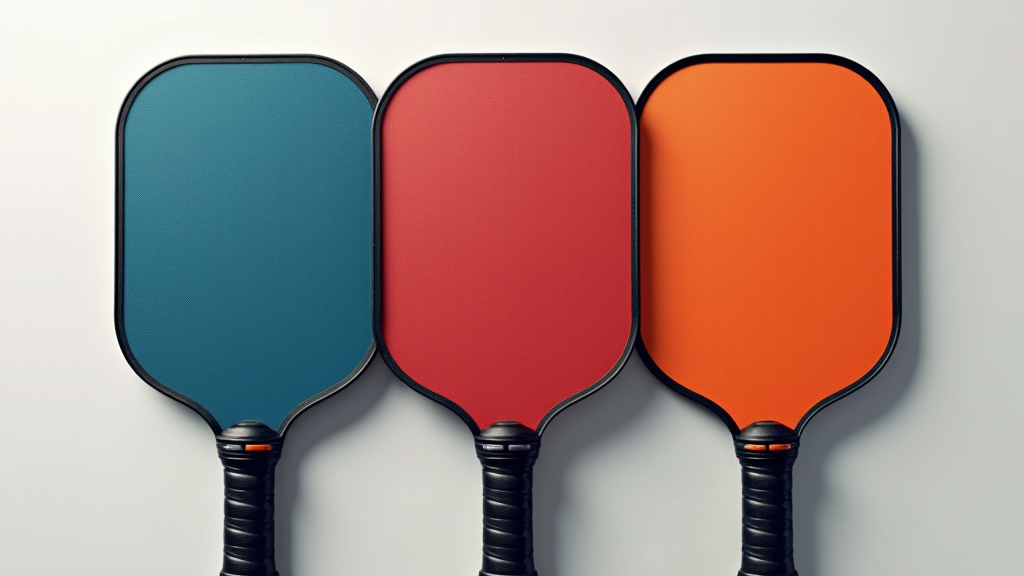
Composite Pickleball Paddle Face Textures: Durability & Spin
Composite face paddles are constructed from two or more materials, typically including fiberglass. These paddles are known for providing a good balance of power, durability, and spin capabilities on the court.
Composite paddles generally fall within the weight range of 7.7 to 8.2 ounces, making them a popular choice for players who desire a reliable and versatile paddle. The gritty texture often found on composite faces helps enhance ball control and spin generation.
These paddles are highly recommended for players seeking high durability, substantial power, and the ability to impart significant spin on the ball.
Graphite Pickleball Paddle Face Textures: Lightweight Control
Graphite face paddles feature a thin layer of graphite as the primary surface material. This material choice results in a paddle that is exceptionally lightweight and offers a soft feel, which is ideal for enhancing touch and control during gameplay.
Typically, graphite paddles range in the low to mid 7-ounce weight category. Their lightweight nature makes them easy to maneuver, allowing players to react quickly and precisely to shots.
Graphite paddles are particularly well-suited for players who prioritize a lightweight paddle with superior touch and control, enabling them to execute finesse shots and maintain accuracy.
Carbon Fiber Pickleball Paddle Face Textures: Strength & Power
Carbon fiber paddles are celebrated for their high strength and exceptional durability. This material provides a robust surface that can withstand intense play and maintain its integrity over time.
Carbon fiber boasts a high power-to-weight ratio, offering even greater strength than steel in many cases. This translates to enhanced power behind each shot without adding excessive weight to the paddle.
These paddles are ideal for players who require a durable paddle and those who prefer a middleweight option that delivers both power and control.
Kevlar Pickleball Paddle Face Textures: Innovative Feel
Kevlar is a relatively new material in the pickleball paddle market, produced and utilized by specific brands seeking to offer unique playing characteristics. These paddles provide a novel texture and an innovative feel that can enhance a player’s performance.
Currently, Kevlar face paddles have limited availability and are primarily offered by brands such as Six Zero and Pickleball Apes, which are known for pushing the boundaries of paddle technology.
Hybrid Pickleball Paddle Face Textures: Customized Performance
Hybrid paddles combine several different materials, such as carbon fiber, fiberglass, composite, and graphite, to create a customized playing experience. This approach allows manufacturers to fine-tune specific characteristics like power, spin, touch, or control.
By strategically blending these materials, hybrid paddles can offer a versatile performance profile that caters to a wide range of playing styles and preferences. These paddles are available in both middleweight and lightweight configurations.
Aluminum Pickleball Paddle Face Textures: Affordable Option
Aluminum face paddles are commonly found in beginner or less expensive paddle models. These paddles provide an accessible entry point for new players looking to get started with the sport.
While aluminum paddles may not offer the same level of performance as higher-end materials, they are suitable for recreational play and junior players who are still developing their skills. Their affordability makes them a practical choice for casual use.
Aluminum paddles are recommended for new or casual players rather than those seeking long-term serious play, as they may not hold up as well under intense, frequent use.
Pickleball Paddle Face Texture Materials: Pros and Cons
Composite Pickleball Paddle Texture: Advantages & Disadvantages
* **Consider Your Skill Level:** Beginners benefit from the affordability and durability of aluminum, while experienced players may prefer the enhanced performance of carbon fiber or the customizable nature of hybrid paddles.
Composite paddle faces strike a balance, offering a blend of power, durability, and spin potential. This makes them a popular choice for a wide range of players.
- Advantages:A well-rounded option, composite materials provide a good mix of power for drives, durability for longevity, and the ability to generate spin on the ball.
- Disadvantages:While versatile, composite paddles may not offer the pinpoint precision of graphite or the raw power and resilience of carbon fiber.
Graphite Pickleball Paddle Texture: Advantages & Disadvantages
Graphite paddle faces are favored by players who prioritize control and finesse. Their lightweight nature allows for quick reactions at the net.
- Advantages:Graphite excels in providing exceptional control and a lightweight feel, enabling nimble movements and precise shot placement.
- Disadvantages:Graphite paddles may lack the raw power of other materials, potentially shortening their lifespan with heavy use. They can also be more expensive.
Carbon Fiber Pickleball Paddle Texture: Advantages & Disadvantages
Carbon fiber paddle faces are designed for power and resilience, catering to players who want to dominate the court with strong shots.
- Advantages:Carbon fiber provides exceptional power and durability, ensuring the paddle maintains its performance over extended use.
- Disadvantages:The increased performance of carbon fiber typically comes at a higher price point.
Hybrid Pickleball Paddle Texture: Advantages & Disadvantages
Hybrid paddle faces combine different materials to create a customized playing experience, allowing players to fine-tune their paddle’s performance.
- Advantages:Hybrid constructions offer a customizable blend of materials, allowing players to tailor the paddle’s performance characteristics to their specific needs and playing style.
- Disadvantages:Selecting the right material combination for a hybrid paddle can be complex, requiring careful consideration of the desired performance characteristics.
Aluminum Pickleball Paddle Texture: Advantages & Disadvantages
Aluminum paddle faces offer an affordable and durable option, suitable for recreational players and beginners.
- Advantages:Aluminum paddles are affordable, durable, and lightweight, making them a great entry-level option.
- Disadvantages:Aluminum may not be the best choice for advanced or aggressive players who require the power and responsiveness of other materials.
Exploring Pickleball Paddle Face Textures Outline: Adding Texture
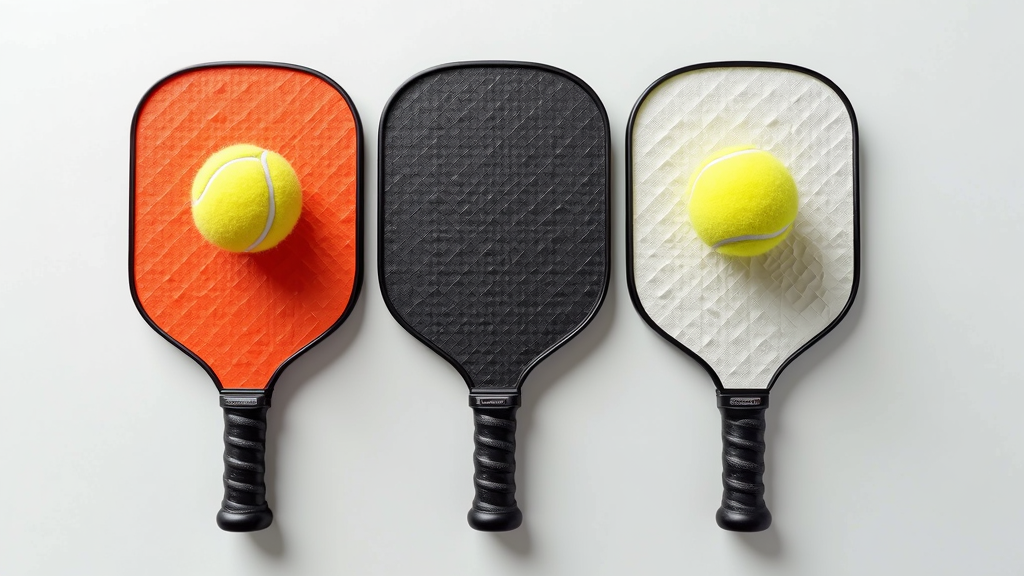
Increasing Spin: The Purpose of Adding Texture
Adding texture to a pickleball paddle face primarily aims to enhance spin and improve grip on the ball. This allows players to execute shots with greater control and more effective pace management. The enhanced grip reduces vibration, contributing to a more comfortable and responsive playing experience. The texture effectively creates micro-grips that increase friction between the paddle and the ball, which significantly aids in control and feel.
Methods to Add Texture: Pickleball Paddle Enhancement
There are several methods to add texture to a pickleball paddle face, each with its own advantages and considerations:
- Sanding Pickleball Paddles for Enhanced TextureSanding involves using fine-grained sandpaper, typically around 220-grit, to gently roughen the paddle’s surface. This creates a subtle texture that can improve grip. Caution is advised, as sanding too aggressively can damage the paddle’s integrity.
- Spray Coating for Pickleball Paddle GripApplying a specialized paddle spray designed to enhance grip is another method. These sprays create a thin, tacky layer on the paddle surface. It’s crucial to use a spray specifically formulated for pickleball paddles to avoid damaging the paddle face.
- Grip Tape Application for Added Paddle TextureWrapping grip tape around the handle is a common way to improve grip and potentially add to the spin potential. Grip tape comes in various widths, typically ranging from 0.75 inches to 1.5 inches, allowing players to customize the feel of their paddle.
- Grip Gel Application for Enhanced Paddle FeelGrip gel can be applied directly to the paddle handle to create a textured, rough surface. This method often provides a tackier feel compared to using tapes, offering a different kind of grip enhancement.
- Epoxy Resin Coating for Paddle TextureApplying epoxy resin creates a more permanent textured layer on the paddle’s surface. This method requires careful application to ensure even coverage and to avoid trapping air bubbles, which can affect the paddle’s performance and durability.
Sanding Pickleball Paddles for Enhanced Texture
Sanding involves using fine-grained sandpaper, typically around 220-grit, to gently roughen the paddle’s surface. This creates a subtle texture that can improve grip. Caution is advised, as sanding too aggressively can damage the paddle’s integrity.
Spray Coating for Pickleball Paddle Grip
Applying a specialized paddle spray designed to enhance grip is another method. These sprays create a thin, tacky layer on the paddle surface. It’s crucial to use a spray specifically formulated for pickleball paddles to avoid damaging the paddle face.
Grip Tape Application for Added Paddle Texture
Wrapping grip tape around the handle is a common way to improve grip and potentially add to the spin potential. Grip tape comes in various widths, typically ranging from 0.75 inches to 1.5 inches, allowing players to customize the feel of their paddle.
Grip Gel Application for Enhanced Paddle Feel
Grip gel can be applied directly to the paddle handle to create a textured, rough surface. This method often provides a tackier feel compared to using tapes, offering a different kind of grip enhancement.
Epoxy Resin Coating for Paddle Texture
Applying epoxy resin creates a more permanent textured layer on the paddle’s surface. This method requires careful application to ensure even coverage and to avoid trapping air bubbles, which can affect the paddle’s performance and durability.
Pickleball Paddle Face Textures Outline: Advantages & Disadvantages
Advantages of Textured Pickleball Paddle Faces Outline
Textured pickleball paddle faces offer several advantages that can significantly enhance a player’s game. The primary benefit is improved spin and control. The increased friction between the paddle face and the ball allows players to impart more spin, enabling strategic shot execution such as sharp angles and controlled drops.
Another advantage is the enhanced ability to absorb vibrations. The textured surface often contributes to dampening the impact, reducing hand and arm fatigue during long matches. This can be especially beneficial for players prone to tennis elbow or other similar conditions.
Finally, textured paddles often offer aesthetic appeal. Manufacturers can create unique and visually appealing designs through different texturing techniques, allowing players to express their personal style on the court.
Considerations for Pickleball Paddle Face Texture Outline
While textured pickleball paddles offer numerous benefits, there are also some considerations to keep in mind. Excessive texture can sometimes reduce ball touch and control. Players might find it more challenging to execute delicate shots or maintain a smooth, consistent feel.
It’s also important to be aware of potential restrictions in competitive tournaments. Some organizations may have specific rules regarding paddle texturing, so it’s crucial to verify the regulations before using a heavily textured paddle in official play.
Ultimately, the impact of paddle texture on performance is subjective and depends on individual playing style preferences. A paddle that works wonders for one player might not be the best choice for another. Experimentation and personal testing are essential to finding the right balance.
Pickleball Paddle Face Textures Outline: Legal Regulations
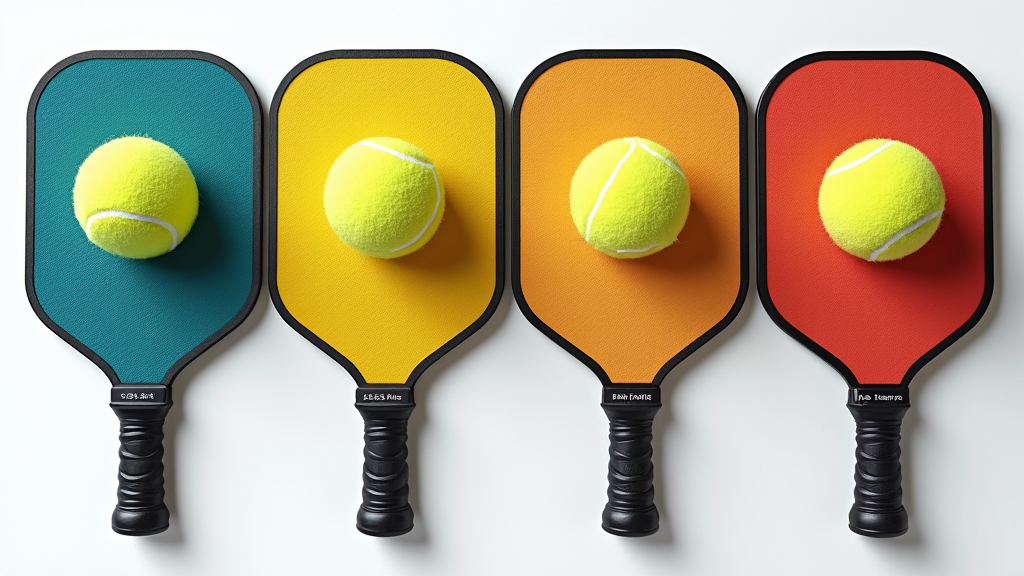
USAPA Rules on Pickleball Paddle Face Textures Outline
The USA Pickleball Association (USAPA) sets strict guidelines regarding pickleball paddle face textures to ensure fair play. According to official rules, the paddle surface must not have any features like holes, rough texturing, or tape that could provide an unfair advantage by imparting excessive spin on the ball.
Smoothness Requirement for Pickleball Paddle Face Textures
Rule 2.E.5.a of the USAPA rulebook explicitly states that “The paddle surface shall be generally smooth and free of perforations designed to affect the flight of the ball.” This means that manufacturers and players alike need to ensure the paddle face is even and without any intentional indentations or protrusions that could alter the ball’s trajectory.
Prohibition of Excessive Spin via Pickleball Paddle Textures
Further elaborating on the restrictions, Rule 2.E.5.b states, “The paddle surface shall not contain any features that allow a player to impart excessive spin on the ball.” This rule is aimed at preventing players from using modified or specially designed paddle faces to gain an undue advantage through increased spin control.
Consequences of Illegal Pickleball Paddle Face Textures
Using a paddle that violates these USAPA regulations can lead to serious consequences. If a paddle is deemed illegal due to non-compliant face textures or other modifications, the player using it may face disqualification from the match or tournament. It is the player’s responsibility to ensure their paddle meets all USAPA standards before use.
Choosing the Right Pickleball Paddle Face Textures Outline
Evaluate Playing Style for Paddle Face Textures
**Key Takeaway:** When choosing a pickleball paddle face texture, align it with your playing style – power players may prefer textures that enhance aggressive shots, while control-oriented players should seek textures that aid strategic placement. Also, consider the environmental impact and manufacturing process of your paddle choice to balance performance, cost, and sustainability.
Selecting the right pickleball paddle face texture begins with a thorough assessment of your playing style. Are you a power player who thrives on aggressive shots and fast-paced rallies? Or do you prefer a more controlled game, focusing on strategic placements and finesse? Perhaps you seek a balance between the two.
Consider how the weight and feel of the paddle in your hand influence your shots. A heavier paddle might provide more power, while a lighter paddle offers greater maneuverability and control. It’s essential to experiment with different materials and textures to determine which feels most natural and enhances your performance on the court.
Environmental Considerations for Pickleball Paddle Textures
As pickleball continues to grow in popularity, it’s important to consider the environmental impact of our equipment choices. When selecting a paddle, favor materials that are recyclable or sustainably sourced. This helps to minimize waste and reduce the strain on our planet’s resources.
Look for manufacturers who prioritize eco-friendly manufacturing processes, such as reducing energy consumption and minimizing the use of harmful chemicals. By making conscious choices, we can enjoy the game we love while also protecting the environment for future generations.
Impact of Manufacturing on Pickleball Paddle Cost
The manufacturing process of a pickleball paddle significantly impacts its cost. Complex processes, such as those used to create carbon fiber paddles with intricate textures, often result in higher prices. This is due to the increased durability and the sophisticated production methods required.
On the other hand, paddles made from easier-to-produce materials like aluminum tend to be more affordable. While they may not offer the same level of performance or durability as carbon fiber models, they can be a great option for beginners or players on a budget. Understanding the manufacturing process can help you make an informed decision based on your needs and budget.
Pickleball Paddle Face Textures Outline: Key Takeaways
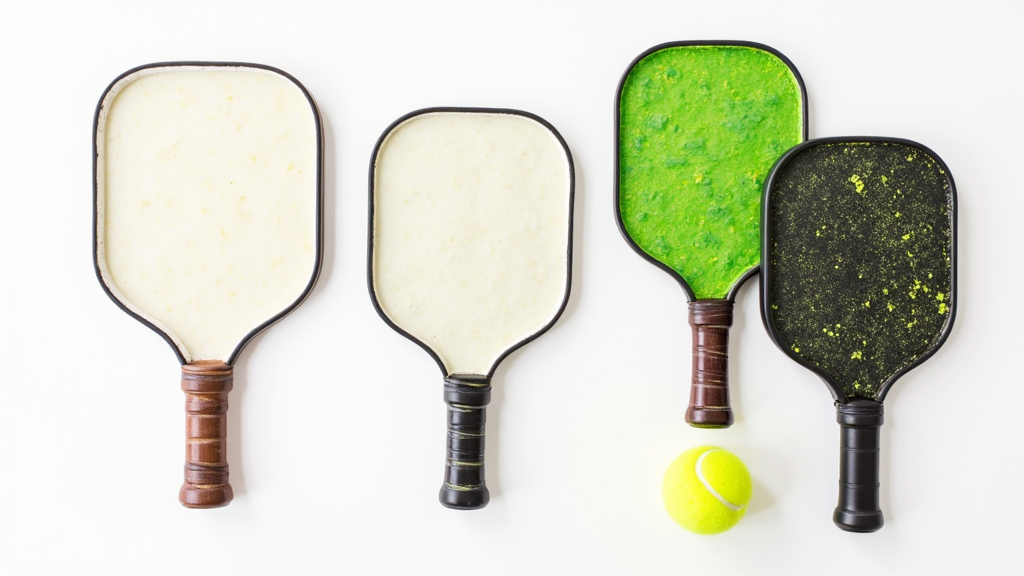
Recap: Impact of Pickleball Paddle Face Texture
In summary, the texture of your pickleball paddle’s face plays a pivotal role in dictating its performance on the court. From generating spin to controlling the ball’s trajectory, the surface characteristics are a major factor. Understanding the nuances of each texture type empowers you to make informed decisions that align with your playing style and desired outcomes.
Material and Texture Advantages: A Pickleball Paddle Review
We’ve explored the diverse range of materials and textures used in pickleball paddle construction, each offering unique advantages. Whether it’s the raw power of carbon fiber or the enhanced control of fiberglass, the choice depends on your individual preferences and the demands of your game. Remember that experimentation is key to finding the perfect fit.
Rules and Regulations: Pickleball Paddle Texture Compliance
It is important to remember that while exploring the options, always ensure your chosen pickleball paddle face texture adheres to the official rules and regulations set forth by governing bodies. Compliance is essential for fair play and avoiding penalties during competitive matches. Stay informed about any updates or changes to these regulations to maintain your competitive edge.
Paddle Selection: Matching Texture to Pickleball Playing Style
Selecting the right pickleball paddle is a personal journey, and matching the face texture to your playing style is crucial for optimal performance. Aggressive players may benefit from textured surfaces that enhance spin, while those prioritizing control may prefer smoother options. Consider your strengths, weaknesses, and overall game strategy when making your decision.
Environmental Impact: Considering Paddle Material Choices
As pickleball continues to grow in popularity, it’s important to consider the environmental impact of our equipment choices. Opting for paddles made from sustainable materials and supporting manufacturers committed to responsible production practices can help minimize our footprint on the planet. Choose wisely and play responsibly.
Maintaining Pickleball Paddle Texture for Peak Performance
Regular inspection and maintenance are essential for preserving your pickleball paddle’s texture and performance. Clean the surface regularly to remove dirt and debris, and store your paddle in a protective case to prevent damage. By taking good care of your equipment, you’ll ensure consistent performance and extend its lifespan.

